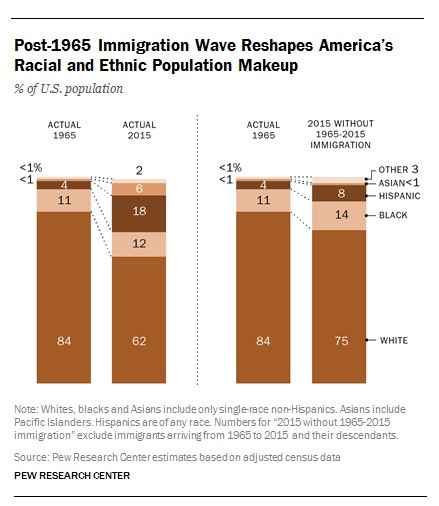🌐 The amazing success of 'Asianomics' in America — and what we should learn from it
Also: 5 Quick Questions for … chronicler of human progress Marian Tupy
In This Issue
The Essay: The amazing success of 'Asianomics' in America
5QQ: 5 Quick Questions for … chronicler of human progress Marian Tupy
Micro Reads: population growth, quantum computing, the new Space Age, and more
Quote of the Issue
“Immigration has always been a formidable engine of economic and demographic growth for the United States.” - economist Giovanni Peri.
The Essay
🌐 The amazing success of 'Asianomics' in America
For those who think we need to “make America great again,” when do they think America started going off the rails? If you still find some resonance in that overdone campaign slogan (the 45th POTUS didn’t come up with it, though he did give it a more nefarious twist) and you’re a pro-progress, Up Wing person like myself, you might pick the year 1972. It marked the final year of Project Apollo and the waning days of the postwar productivity boom. This is the pro-growth, drawbridge-down MAGA of Ronald Reagan and Bill Clinton, who both used the slogan themselves. Up Wing MAGA.
But then there’s the other kind of MAGA, one of an economic nostalgia that goes back a bit further. This is the drawbridge-down MAGA of anti-globalization. Down Wing MAGA. And for those who find meaning in this variant, 1965 is the key year when everything went wrong. That’s when Congress passed the Immigration and Naturalization Act, a sweeping reform abolishing country-based quotas and prioritizing skills and family connections. (Recall populist provocateur Steve Bannon expressing concern a few years ago that “two-thirds or three-quarters of the CEOs in Silicon Valley are from South Asia or from Asia.”)
This law made America more populous today than it would be otherwise. Since 1965, as Pew Research has noted, new immigrants, their children, and their grandchildren accounted for 55 percent of US population growth, adding 72 million people to the nation’s population through 2015. The law also made America more diverse. Again Pew: “In 1965, 84% of Americans were non-Hispanic whites. By 2015, that share had declined to 62%. Meanwhile, the Hispanic share of the U.S. population rose from 4% in 1965 to 18% in 2015. Asians also saw their share rise, from less than 1% in 1965 to 6% in 2015.”
Look, I don’t want to spend time exploring the reasons why some people think a more diverse America is a bad thing, even if a whiter America were also a poorer America, both economically and culturally. Instead, given that it’s Asian Pacific American Heritage Month, I’ll drill down into what Goldman Sachs in a recent report calls “Asianomics” and how Asian Americans have made outsized contributions to this nation’s labor market, innovation, and GDP.
Keep reading with a 7-day free trial
Subscribe to Faster, Please! to keep reading this post and get 7 days of free access to the full post archives.




